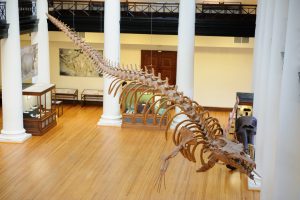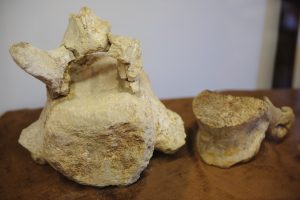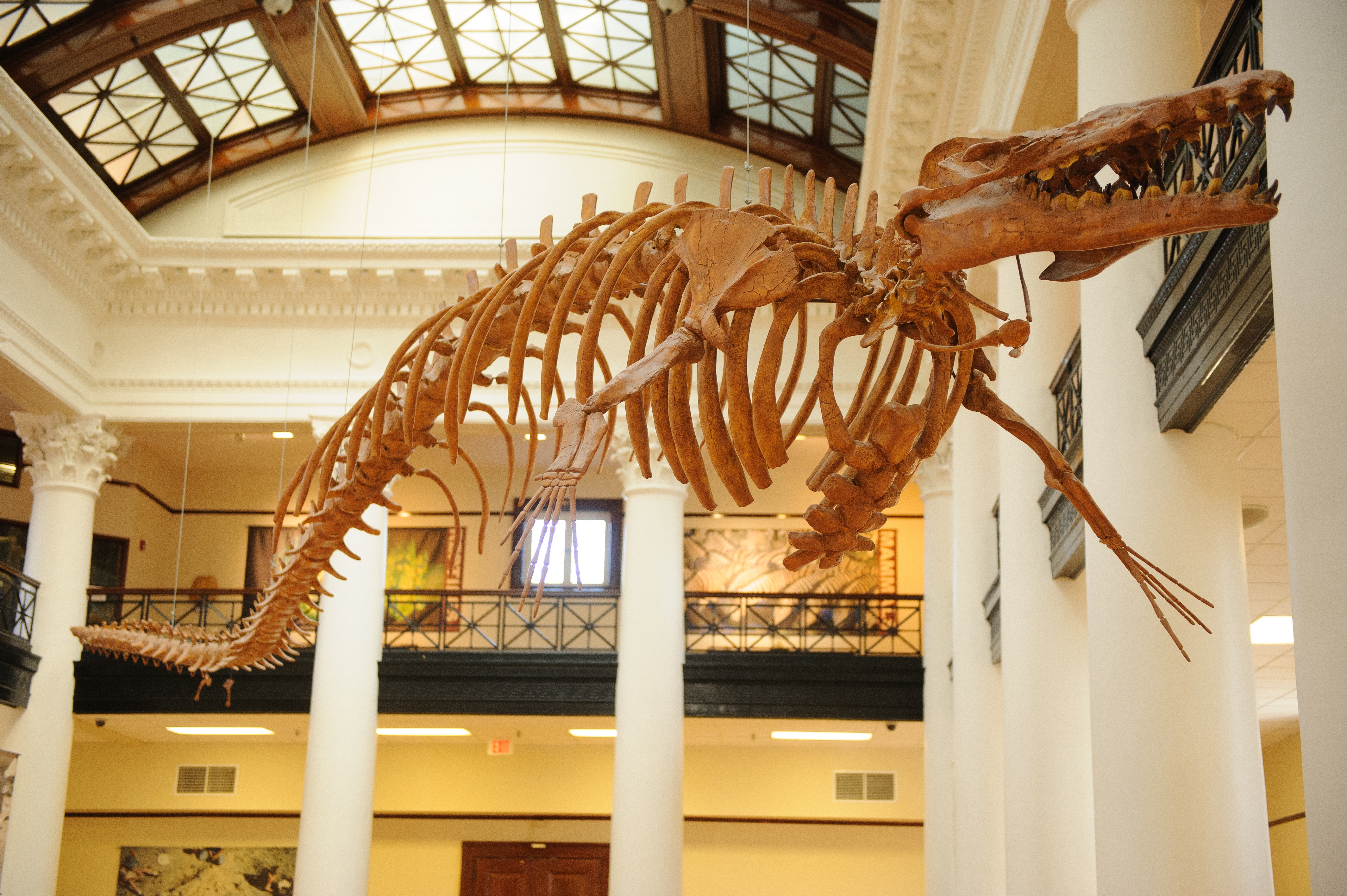
Basilosaurus cetoides is an early archaeocete whale that lived in the shallow seas along the Alabama coast 34 to 40 million years ago. During that time, the Alabama coastline was along where Clarke, Washington and Choctaw counties are today. Basilosaurus was 50 to 60 feet long, had different shaped teeth and vestigial hind limbs. Based on stomach contents, it is believed that Basilosaurus fed mostly on sharks and fish, but some bite marks on smaller whales lead some researchers to believe it might have also eaten them. Basilosaurus was a primitive whale and is not directly related to the modern groups alive today.

The earliest specimens were found in Alabama in the 1830s, where their enormous vertebrae were used for furniture and building construction materials. Basilosaurus came to the attention of scientists in 1834 when Judge Creagh of Clarke County first sent bones to Richard Harlan in Philadelphia. Harlan then sent the specimens to England, where Sir Richard Owen formally named it in 1840. Originally, it was believed that Basilosaurus was an extinct reptile, hence its name, which means “king lizard.” In 1984, Basilosaurus cetoides was adopted as the state fossil of Alabama.
The Vertebrate Paleontology Collection consists of more than 10,000 cataloged items, most of which consist of individual specimens. The collection contains items from the Mississippian through Pleistocene deposits of Alabama, but focuses primarily on Cretaceous and Eocene marine formations. The collection includes a strong representation of Cretaceous mosasaurs, Eocene whales and Pennsylvanian trackways from the Union Chapel Mine trackway site; it includes 13 types of specimens and is housed in the Mary Harmon Bryant Collections Facility.
Dr. Dana Ehret, curator of paleontology for The University of Alabama Museums, provided the above information.
